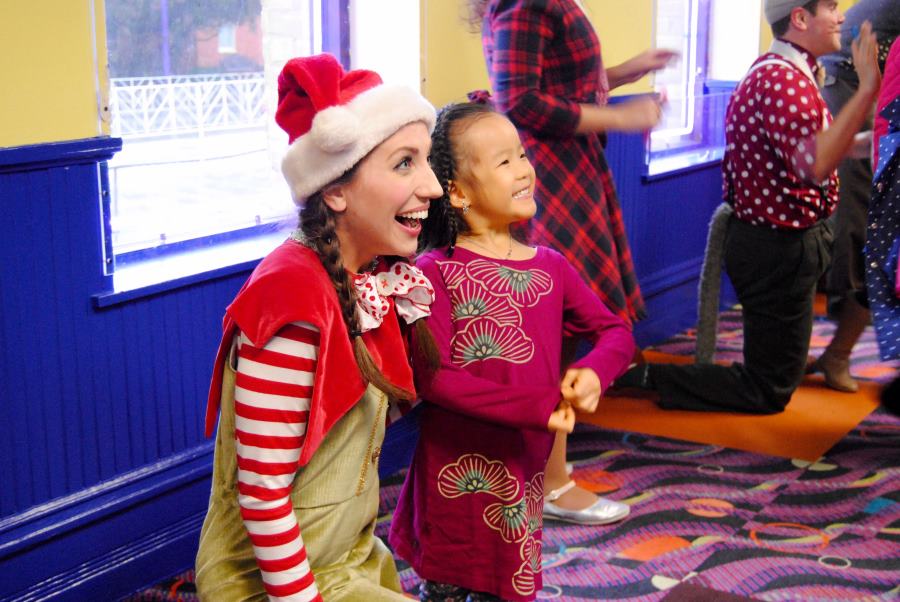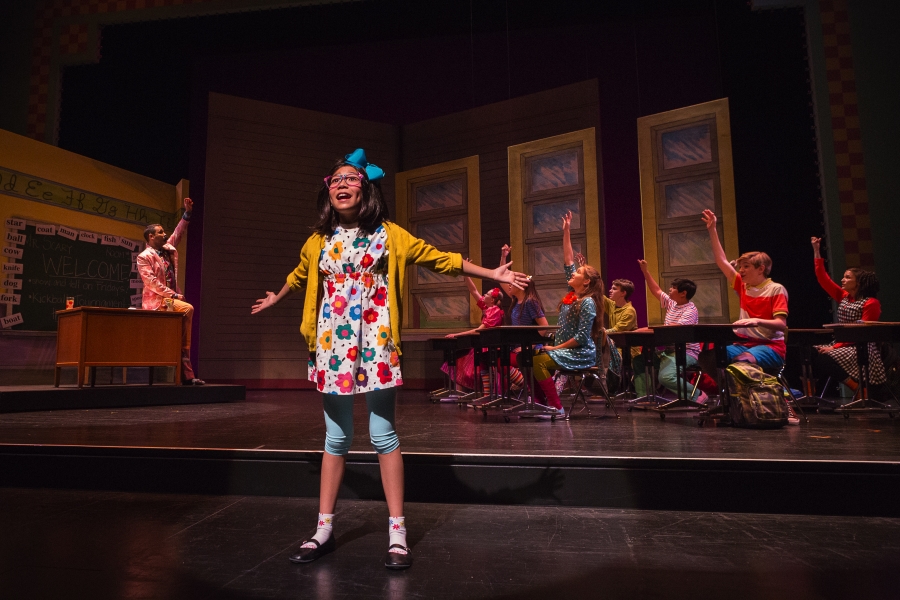Theatre for young audience (TYA) professionals looking for fundraising tips might want to quote Hallie Flanagan in their next round of NEA proposals. In her memoir Arena: The Story of the Federal Theatre, Flanagan, the former director of the Roosevelt administration’s Federal Theatre Project, praised the Children’s Federal Theatre in Gary, Ind., writing: “It is probable that in terms of human value, no money on federal theatre was better spent.” Those words were penned in 1940, but it remains a revolutionary statement: that out of the 1,200 productions funded by the Federal Theatre Project, TYA was the government’s best investment.
Before the Federal Theatre Project, funding for children’s theatre came predominantly from wealthy individuals who were either a part of the settlement house movement or members of the Junior League. Mostly young women, these philanthropists came to see children’s theatre as an alternative to such less-respectable theatrical forms as vaudeville and burlesque, and saw drama classes as a way to help young immigrants learn English. The Federal Theatre Project saw TYA as an opportunity to foster a new generation of theatre patrons, and for its short existence from 1935 to 1939, both artists and funders (i.e., the federal government) took the work seriously.
Today TYA companies continue to receive institutional dollars, both from the government and from elsewhere, though on a smaller scale than theatres that produce primarily for adults. Only 19 of the 277 companies that received NEA theatre funding last year were TYA-focused institutions, most of which received $10,000, the lowest grant awarded (though it should also be noted that Children’s Theatre Company of Minneapolis received $75,000, one of the largest theatre grants awarded to any organization). Of the 506 organizations that received Shubert Foundation Grants last year, fewer than 40 were TYAs.
“I think there is competition for funding from adult theatre companies,” says Jessy Friedt, development director of Oregon Children’s Theatre in Portland, Ore., “so many of them now have education components and youth components.” Founded in 1988 as the Portland Civic Theatre’s “Theatre for Young People,” Oregon Children’s Theatre’s history in the community has helped it to establish a place in the local funding landscape.
While there is competition, the company’s funding profile is comparable to that of their adult counterparts, with substantial grants from the Regional Arts and Culture Council, Oregon Cultural Trust, and Oregon Arts Commission, among others. “We have been around for 30 years, and have really built a reputation for reaching a vast number of kids, and the quality of theatre we put onstage is comparable to other regional theatres in Portland and other theatres of our budget size,” says Friedt. “We’ve also been an NEA recipient for many years, and that has helped as well in showing that TYA has the same value as adult theatre companies.”
Friedt stresses how OCT’s education programs are the primary interest of many institutional funders. “Eighty-five to 90 percent of our foundation funding comes through for education,” she says. “We often say we’re as much an education organization as an arts organization. And corporate funders tend to come through the arm of event sponsorship, but more and more they want to be involved on the programmatic level, or know that their funding is going towards education and having an impact.”
The NEA and other government funders do support new-play development, work that OCT does regularly, but increasing arts access is still often the most compelling OCT story. “Bringing the arts to the kids who need it, that’s No. 1 throughout all of the arms of giving,” Friedt says.
The Magik Theatre in San Antonio, Texas, sees access as a core value as well, and recently received a $100,000 grant from Impact San Antonio, a women-focused nonprofit, to make their historic building more accessible. “The Magik Theatre mission is focused on accessibility for all, which we work towards achieving through sensory-friendly and American Sign Language-interpreted shows, plus programming for all ages,” explains marketing manager Megan Coy Schwamb. “But the building limitations are something our programming can’t fix.” The grant will fund new seats in the theatre, ADA-compliant bathrooms, and making the handicap access ramp easier to use and more convenient for patrons in wheelchairs.

The Magik Theatre’s additional local funders include Bexar County, the Texas grocery store chain HEB, and other local businesses, but general manager Shelley Weber sees a lot of room for growth. “Many of the ‘grown-up’ theatres in the state of Texas are huge regional houses such as the ZACH or the Alley Theatre,” she notes. “As much larger theatre companies they have access to resources that are a bit beyond our current reach.”
Even more than the company’s size, Weber sees fundraising challenges in having to demonstrate TYA’s impact. “A unique challenge to theatre for young audiences is making that connection between the theatrical experience and the benefits to reading and comprehension, as well as demonstrating a direct link to empathy and compassion in children,” she says. “Corporate funders like to see data and numbers that are hard to quantify with this kind of work.”
For OCT’s Friedt, funder misconceptions about TYA can still be a challenge. “I think sometimes people don’t view children’s theatre as professional theatre, and they’ll think that a company for adults will do a better job with arts education,” she remarks. “But the reality is we are also a professional theatre company, and our challenge is communicating that piece and educating our community.”
Despite these challenges, both Weber and Friedt see the unique appeal TYA can have for funders. The Magik Theatre is partnering with a San Antonio school district to collect data that will quantify their impact on student literacy skills, a project that could potentially open up new avenues of funding. “We will be supporting a group of low-performing first graders who will experience each one of our mainstage performances, one touring show, and interact with a teaching artists prior to each theatre experience,” Weber says. “The district will be sharing student progress via the state-mandated reading skills test to see if this group has an uptick in literacy skills attributable to their theatre experiences. We are hopeful this ‘hard data’ will be an incentive for additional funding from data-driven funders or corporations.”
Friedt emphasizes how TYA companies engage with theatre, education, and children in a more holistic way than many adult theatres. “When most adult theatre companies apply for funding, theatre is their main focus,” she says. By contrast, TYA “has this trifecta of theatre, education, and children, where each of the three legs of the stool is equally strong. I think that really allows us to access some funding that many adult theatre companies cannot. As opposed to education being an ancillary program, we can say that it’s actually a core part of our mission.”
Emma Halpern is the co-artistic director of New York Children’s Theater. She writes a monthly column for American Theatre about TYA.


